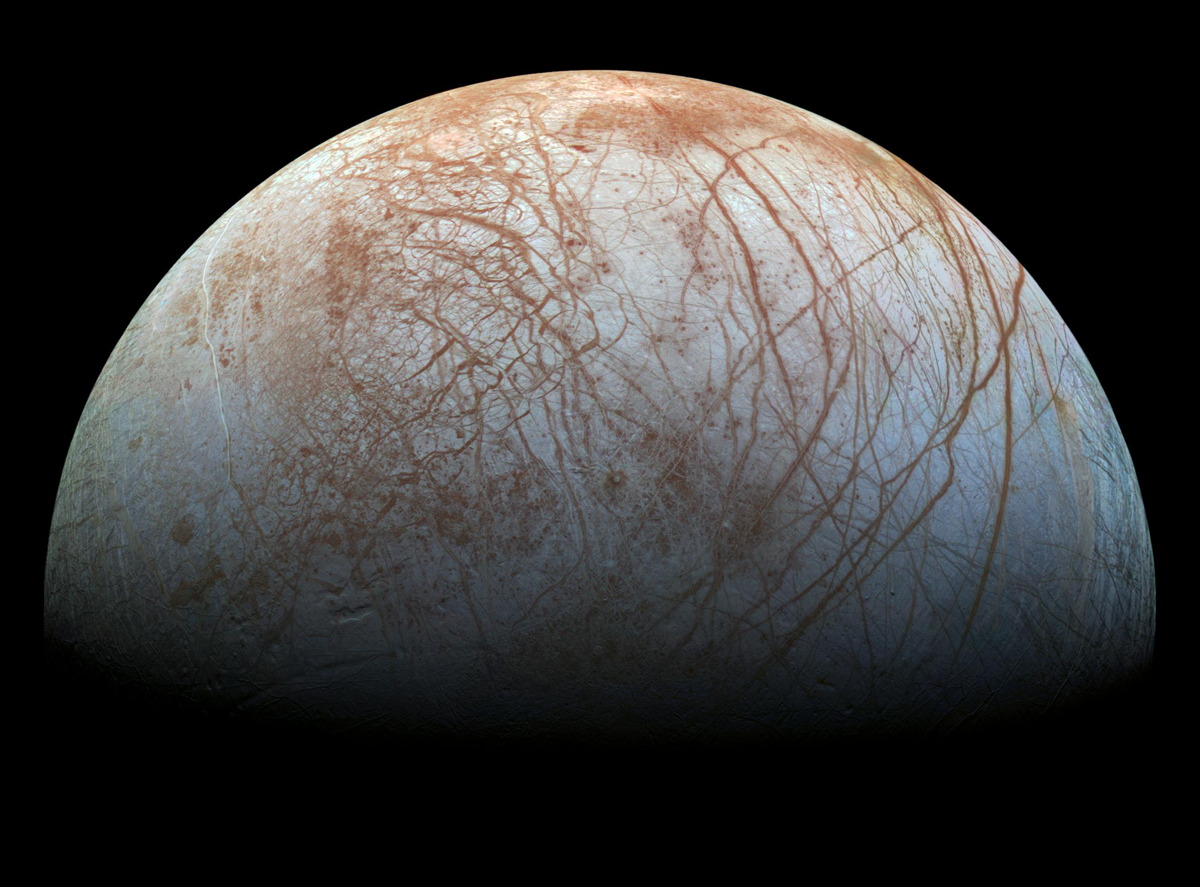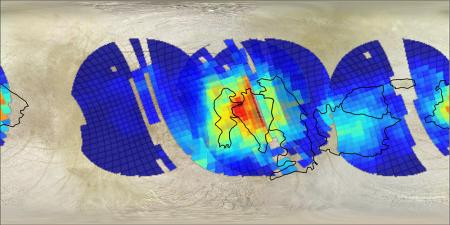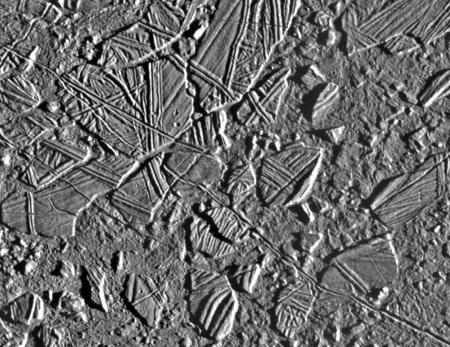
If humanity ever launches a life-hunting mission to the icy surface of Europa, the probe should probably touch down on the "chaos terrain" of the ocean-harboring Jupiter moon, a new study suggests.
Europa's complex chaos regions — which feature numerous cracks, ridges and other signs of geological activity — may offer a way to sample the moon's huge subsurface ocean of liquid water, which is buried beneath an estimated 60 miles (100 kilometers) of ice, researchers said.
"If you had to suggest an area on Europa where ocean water had recently melted through and dumped its chemicals on the surface, this would be it," study co-author Mike Brown, an astronomer at the California Institute of Technology (Caltech), said in a statement. [Photos: Europa, Mysterious Icy Moon of Jupiter]
"If we can someday sample and catalog the chemistry found there, we may learn something of what's happening on the ocean floor of Europa and maybe even find organic compounds, and that would be very exciting," Brown added.

The scientists, led by Caltech grad student Patrick Fischer, studied the chemical composition of 1,600 locations on the surface of Europa by analyzing observations of the moon made in 2011 using a spectrograph at the Keck Observatory in Hawaii. (Spectrographs break light into its constituent wavelengths and measure the resulting frequencies.)
This work revealed three basic categories of surface material on Europa: water ice, which dominates the satellite; chemicals that result when sulfur and oxygen (which likely originate from eruptions on Jupiter's volcanic moon Io) react with ice; and a set of compounds that remain unidentified at the moment.
Then, the team overlaid these composition readings on a Europa map constructed with images taken by NASA's Galileo spacecraft, which orbited Jupiter in the 1990s and early 2000s. They found that the mystery compounds matched up with the distribution of Europa's chaos terrain.
Get the Space.com Newsletter
Breaking space news, the latest updates on rocket launches, skywatching events and more!
"It was a stunning moment," Fischer said in the same statement. "The most important result of this research was understanding that these materials are native to Europa, because they are clearly related to areas with recent geological activity."
The researchers don't know what the chaos-region chemicals are, but they think the compounds could provide a window into Europa's possibly life-supporting ocean.
"We think we might be looking at salts left over after a large amount of ocean water flowed out onto the surface and then evaporated away," Brown said. "They may be like the large salt flats in the desert regions of the world, in which the chemical composition of the salt reflects whatever materials were dissolved in the water before it evaporated."

NASA has no concrete plans to land a spacecraft on Europa's surface, but the agency is developing a probe that will perform dozens of flybys of the moon to better assess its life-hosting potential. This roughly $2 billion mission, which does not have a formal name yet, should launch by the mid-2020s, NASA officials say.
The new study has been accepted for publication in The Astronomical Journal.
Follow Mike Wall on Twitter @michaeldwall and Google+. Follow us @Spacedotcom, Facebook or Google+. Originally published on Space.com.
Join our Space Forums to keep talking space on the latest missions, night sky and more! And if you have a news tip, correction or comment, let us know at: community@space.com.

Michael Wall is a Senior Space Writer with Space.com and joined the team in 2010. He primarily covers exoplanets, spaceflight and military space, but has been known to dabble in the space art beat. His book about the search for alien life, "Out There," was published on Nov. 13, 2018. Before becoming a science writer, Michael worked as a herpetologist and wildlife biologist. He has a Ph.D. in evolutionary biology from the University of Sydney, Australia, a bachelor's degree from the University of Arizona, and a graduate certificate in science writing from the University of California, Santa Cruz. To find out what his latest project is, you can follow Michael on Twitter.









